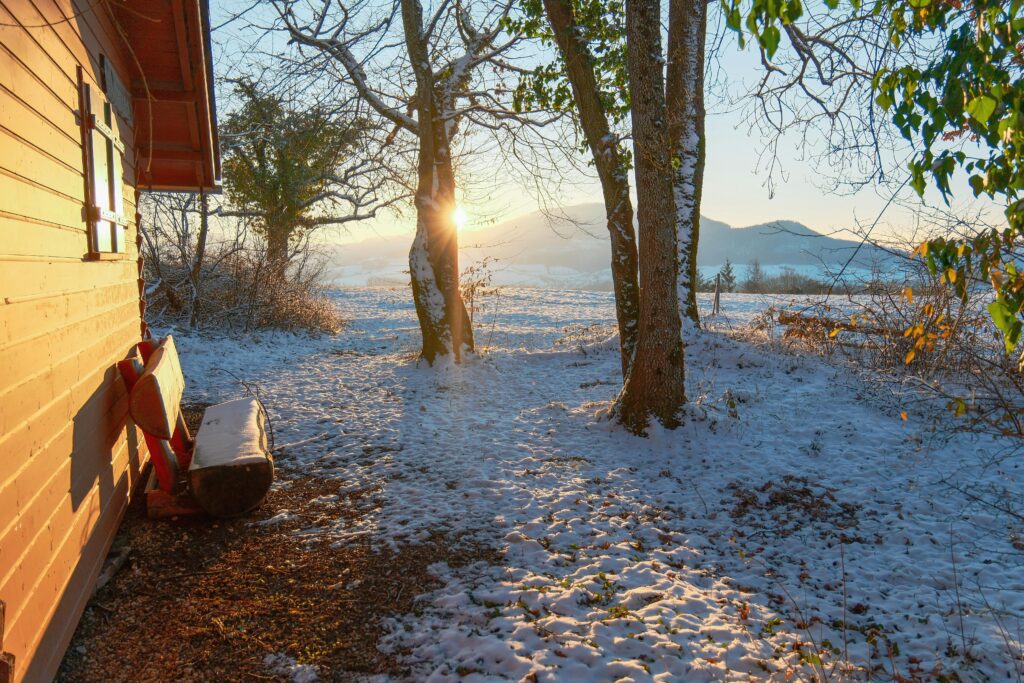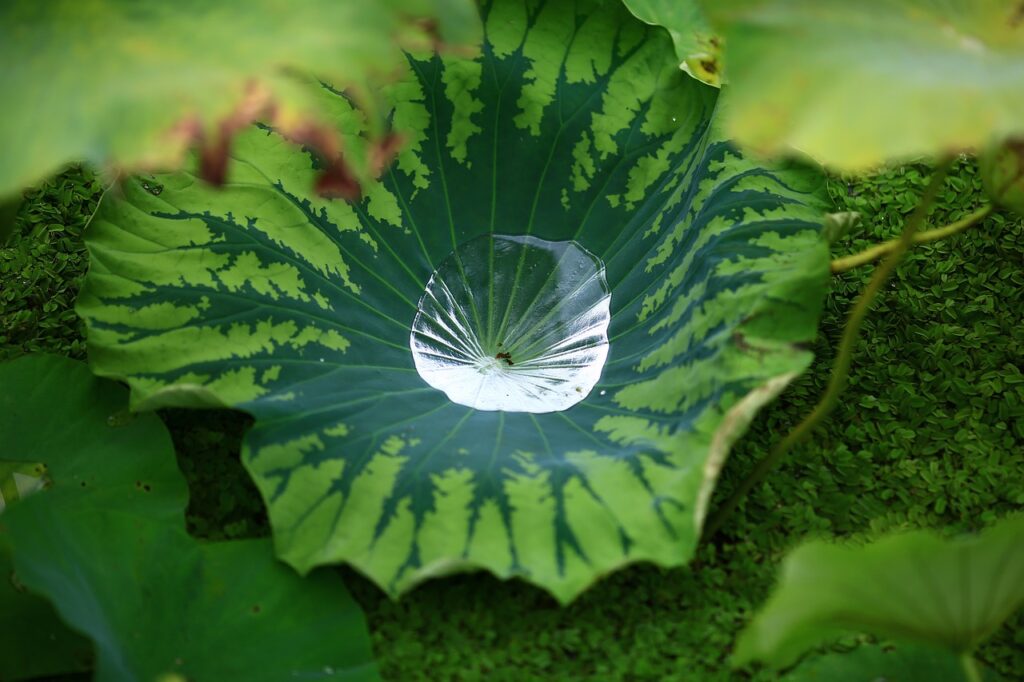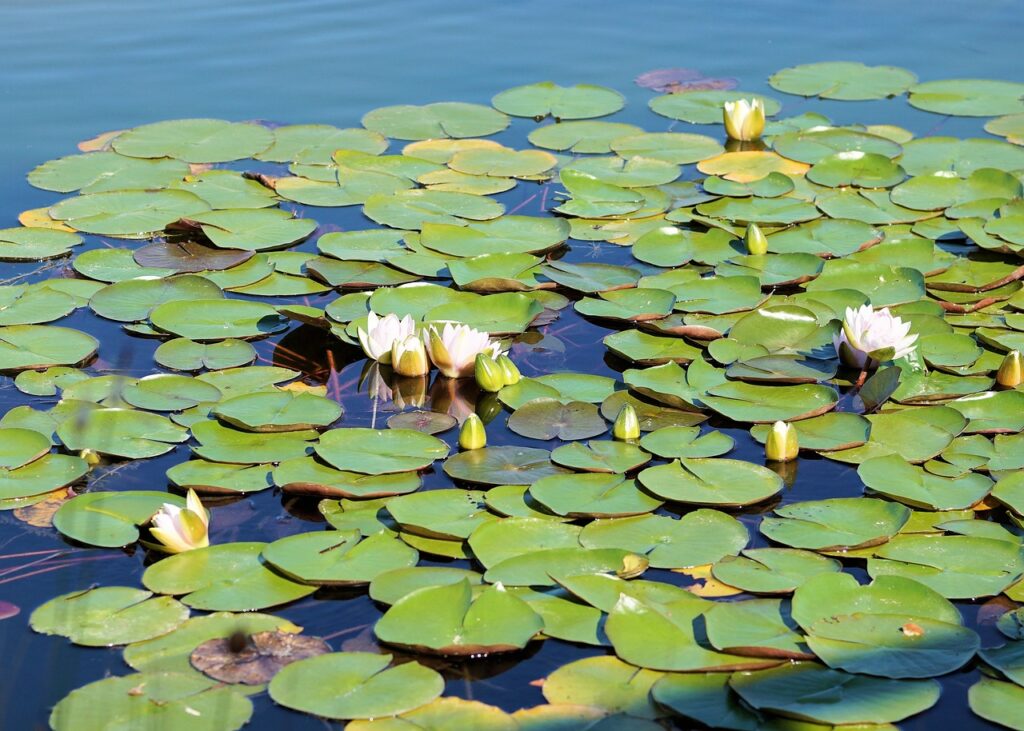Living near a pond can be a dream come true for many homeowners, but have you ever wondered how close should a pond be to a house? Today, we will explore the ideal proximity of a pond to a home and discuss the factors that should be taken into consideration.
From the peaceful sounds of water to the potential risks of flooding, we will provide you with the information you need to make an informed decision when it comes to choosing the perfect spot for your pond. So, let’s dive in and discover the ideal distance between a house and a pond!
Safety Considerations
The priority is safety when it comes to the design and placement of ponds near houses. It is crucial to be aware of potential hazards in the vicinity of a house and take necessary precautions to ensure the well-being of everyone.
Potential Hazards in Proximity to a House
When planning the location of a pond, it is important to consider potential hazards that could pose a risk to the house or its occupants. For instance, large trees near the pond could potentially fall during storms or strong winds, causing damage to the house.
Additionally, if the pond is located too close to the house, it might increase the risk of flooding or water damage. Therefore, it is essential to carefully assess the surroundings and choose a location that minimizes these potential hazards.
Water Depth and Drowning Risks
Another crucial safety consideration when placing a pond near a house is the water depth and the associated drowning risks. If the pond is too deep, especially in areas where children or pets frequent, it can pose a significant safety hazard.
To mitigate this risk, we do recommend design a pond with a gradual slope and providing sturdy railings or barriers around the edges to prevent accidental falls into deep water. It is crucial to strike a balance between creating a beautiful water feature and ensuring the safety of our loved ones.
Access to the Pond
Easy and safe access to the pond is another essential safety consideration. Properly designed walkways or paths leading to the pond can prevent accidents, such as slips or trips, especially during wet or slippery conditions. Illumination along these pathways can further enhance safety during night time use. We at We Ponds believe in creating water features that not only beautify your property but also prioritize the safety and well-being of your family and guests.
Aesthetics and Practicality
When designing a pond near a house, striking a balance between aesthetics and practicality is vital. We understand the importance of creating a visually appealing water feature while ensuring its functionality and ease of maintenance.
Visibility and Enjoyment
Designing a pond in close proximity to a house allows for maximum visibility and enjoyment. Whether you are sipping your morning coffee or relaxing in your living room, a well-placed pond can provide a picturesque view and a serene ambiance. By carefully considering the placement of the pond, we ensure that it becomes an integral part of your daily life.
Landscaping and Design
Integrating the pond seamlessly into the overall landscape design of your property adds to its appeal and enhances its aesthetic value. We take into account factors such as the existing vegetation, architectural style, and terrain to create a cohesive and harmonious design that complements your house.
Maintenance and Accessibility
Practicality is also an important aspect to consider when placing a pond near a house. Easy accessibility to the pond ensures convenient maintenance, such as cleaning and servicing. By strategically positioning the pond, we ensure that routine maintenance tasks are hassle-free and don’t disrupt the overall functionality of your property.

Ecological Balance
It is important to recognize creating a pond that not only enhances the beauty of your property but also maintains ecological balance within the surrounding environment.
Impact on Surrounding Vegetation
When placing a pond near a house, it is essential to consider its potential impact on surrounding vegetation. The shade cast by the pond may affect the growth of nearby plants, and the nutrient runoff from the pond could also have consequences for vegetation health. Strive to strike a balance that enriches the surrounding greenery while ensuring the pond’s vitality.
Wildlife Attraction and Nuisance
Ponds can attract various forms of wildlife, adding to the ecological diversity of your property. However, it is essential to consider both positive and potential negative impacts. While beneficial wildlife, such as birds and butterflies, can enhance the overall experience, some species might become nuisances. We take measures to design ponds that strike a balance, attracting desired wildlife while minimizing potential disruptions.
Water Quality and Pond Health
Maintaining good water quality and ensuring pond health is crucial not only for the longevity of the pond but also for the overall balance of the ecosystem. Employ effective filtration systems, aeration techniques, and appropriate plant selection to maintain pristine water conditions, benefiting both the pond’s inhabitants and the surrounding environment.

Building Regulations and Permits
Before embarking on any pond installation near your house, it is important to be aware of the local building codes, setback requirements, and obtain the necessary permits. Visit the authorities and be guided through this process, ensuring that your project complies with all relevant regulations.
Local Building Codes
Building codes vary from one jurisdiction to another, and it is important to understand the specific requirements in your area. These codes often cover aspects such as pond depth, safety measures, and setback distances from the house. By working closely with local authorities, you can ensure that your pond meets all applicable regulations.
Setback Requirements
Setback requirements are the minimum distances between the pond and other structures, such as houses, property lines, or wells. These requirements serve multiple purposes, including safety, environmental protection, and aesthetic considerations. Thoroughly assess these setbacks to ensure compliance and avoid any potential conflicts.
Obtaining the Necessary Permits
Where necessary, obtaining the necessary permits for your pond installation is a crucial step in the process. Failure to comply with permit requirements may result in costly fines or even the need to dismantle the pond. We keep going on about this, because it is very important, but please make sure you have navigated through the permit application process, ensuring that all necessary documents are submitted correctly and in a timely manner.

Foundation Considerations
The foundation of both the pond and the house are critical factors to consider when deciding on the proximity between them. Take into account various foundation considerations to ensure the stability and functionality of both structures.
Potential Soil Erosion
Soil erosion can have detrimental effects on both the pond and the house’s foundation. Proper drainage and erosion control measures are implemented to prevent any runoff from eroding the soil around the foundation. By paying close attention to these potential issues, you will ensure the durability and stability of the overall structure.
Ground Stability and Settling
The stability and settling of the ground can greatly impact both the pond and the house. It is crucial to conduct thorough soil testing to assess the ground’s stability and ensure it can support the weight of the pond. Properly compacted soil and additional stabilization measures may be necessary to prevent settling and subsequent damage to both structures.
Proximity to Building Foundations
The proximity between the pond and the building foundations is another important consideration. Building foundations are designed to bear the load of the structure, and any interference from the pond can compromise their stability. Make sure you carefully assess the distance between the pond and the building foundations to mitigate any potential risks and ensure the longevity of your property.
Privacy and Noise
While ponds can be a source of tranquility, it is important to consider their impact on privacy and noise levels when placing them near a house. Aim to create an environment that maintains your privacy and minimizes any potential noise disruptions.
Impacts on Privacy
Privacy is a cherished aspect of any home, and the placement of a pond should not compromise it. Make sure to consider factors such as the surrounding landscape, the need for screening, and the view from neighboring properties to ensure that your privacy is not compromised by the pond’s placement.
Water Features as Noise Barriers
Water features, such as ponds, can serve as effective noise barriers, reducing the impact of external sounds and creating a peaceful ambience. By thoughtfully designing the layout and considering the acoustics, you can create a pond that shields your property from unwanted noise, providing you with a serene environment to enjoy.
Potential Noise Disruption from Wildlife
While the sound of water can be soothing, some wildlife species, such as frogs or birds, may produce noises that could disrupt your peace. Take care to select appropriate plantings and design features that discourage wildlife from becoming a noise nuisance. By considering both the positive and potential negative impacts of wildlife, you can create a harmonious environment for you to relax and enjoy.

Insurance and Liability
Addressing insurance and liability concerns is paramount when installing a pond near a house. Make sure you prioritize your safety and take appropriate measures to minimize potential risks associated with insurance premiums and liability issues.
Increased Insurance Premiums
Installing a pond near your house may impact your insurance policy premiums. It is essential to consult with your insurance provider to understand any potential increases in premiums. Factors such as the size, depth, and specific features of the pond may influence the insurance company’s evaluation. Ensure your pond’s design meets the requirements to minimize any potential impact on your insurance premiums.
Liability for Injuries or Accidents
Liability is a significant concern when incorporating a pond into your property. Accidental injuries or accidents can occur around the pond, and it is important to take preventive measures. Implementing safety features, such as secure railings, signage, and adequate lighting, reduces the risk of accidents and minimizes liability. Take the time to prioritize your safety and go through the installation process carefully to ensure compliance with safety standards.
Fencing and Safety Measures
Installing appropriate fencing and safety measures around the pond is crucial to prevent accidents and minimize liability. Select fencing options that not only provide security but also complement the design aesthetic of the pond. These safety measures add an extra layer of protection, particularly if you have young children or pets in your household.
Pond Size and Purpose
Determining the size and purpose of your pond is crucial in achieving a successful installation that meets your needs and desires. Make sure you take into account various factors to help you make informed decisions.
Recreational or Decorative Use
Ponds can serve either a recreational or decorative purpose, or a combination of both. Whether you envision swimming, boating, or fishing activities, or simply desire a calming oasis for visual enjoyment, tailor the pond size and design to your specific preferences and lifestyle. By understanding your needs, you can create a pond that enriches your daily life.
Size and Depth Requirements
The size and depth requirements of your pond depend on its intended purpose and the available space. Larger ponds may be necessary for activities such as swimming, while smaller ones are suitable for purely decorative purposes. Determine the ideal size and depth to meet your specific needs, while considering factors such as safety, maintenance, and aesthetic appeal.
Fish Stocking and Aquatic Plants
If you desire a pond that supports fish and aquatic plants, careful consideration of its size and depth is essential. Different fish species have varying space requirements, and aquatic plants thrive in specific conditions. Select suitable fish species and aquatic plants based on the pond’s characteristics and your preferences, ensuring a healthy and vibrant ecosystem.
Climate and Weather
The climate and weather conditions of your location play a significant role in determining the longevity and functionality of your pond. Make sure you consider various climate factors to create a pond that thrives in your specific environment.
Temperature Extremes and Ice Formation
In regions with extreme temperatures, it is essential to design the pond to withstand both hot summers and freezing winters. Ponds in colder climates should have appropriate depth and features to prevent complete freezing, which can damage the pond’s ecosystem. Adequate insulation and careful consideration of the pond’s location help protect against these temperature extremes.
Effect of Rainfall and Flooding
Rainfall and flooding can have significant impacts on a pond’s functionality and surrounding areas. By considering the rainfall patterns and potential for flooding in your region, design your pond with the necessary drainage systems to prevent water overflow and potential damage to the property. Proper planning ensures that your pond can handle heavy rainfall events without causing adverse effects.
Drought and Water Supply
In areas prone to drought or with limited water supply, it is crucial to design ponds that are sustainable and minimize water loss. You will need to incorporate water conservation techniques such as rainwater harvesting, recycled water, or efficient recirculation systems to ensure the long-term viability of your pond, even during periods of water scarcity.

Future Considerations
Planning for the future is an integral part of creating a pond near your house. Always anticipate and address potential future needs or changes to ensure your pond remains a valuable asset to your property.
Expansion or Renovation Plans
Consideration for the potential expansion or renovation of your pond is essential when placing a pond near a house. Whether you foresee future changes to your property layout or envision expanding the pond itself, you will need to incorporate all possibilities into your initial design. Plan ahead, and ensure you are flexible to minimize disruptions in the event of future modifications.
Potential Impacts on Property Value
Installing a pond near your house may potentially impact your property value in a positive way, in particular if a potential buyer is favourable to ponds. However, it is important to consider the potential buyer preferences and market trends in your area as a whole.
Long-Term Maintenance and Upkeep
Maintaining a pond near your house requires regular care and upkeep. Ensure you have sought guidance and soaked up any information available on long-term maintenance practices, such as water quality testing, debris removal, and plant maintenance. Planning for these considerations from the outset, you will create a pond that remains aesthetically pleasing and ecologically balanced for years to come.
How Close Should A Pond Be To A House?
In conclusion, placing a pond near a house requires careful consideration of various aspects, including safety, aesthetics, ecological balance, building regulations, foundations, privacy, insurance, pond size, climate, and future considerations. Take a look at ‘How Do You Build A Fish Pond Step By Step‘ for more information on the actual build process.
If you prioritize these factors, you will ensure a successful integration of a pond into your property, whilst creating a serene and harmonious environment for you and your loved ones to enjoy for a great many years in the future.
